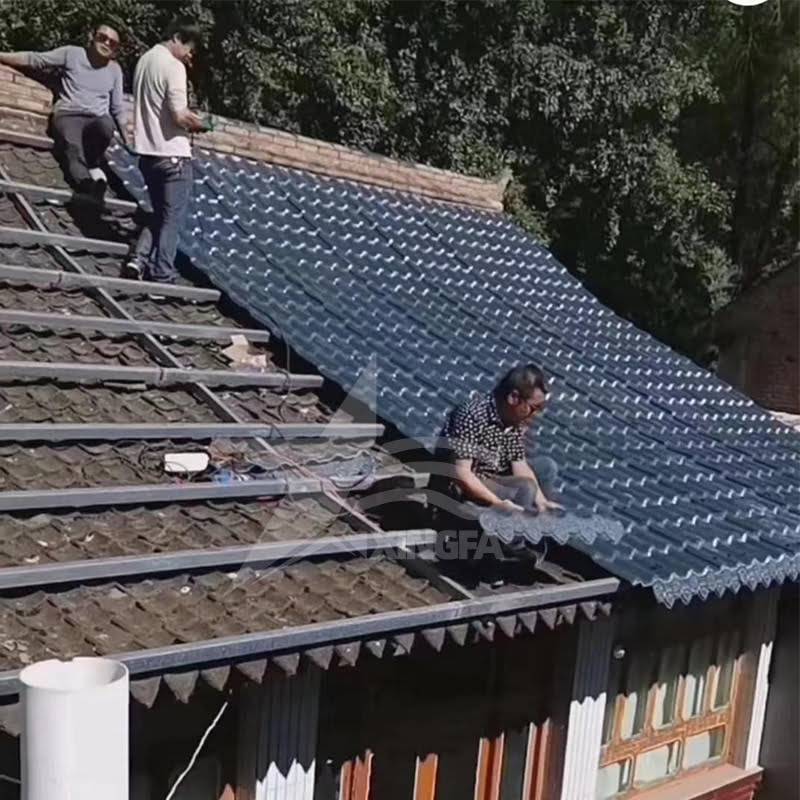In recent years, with the increasing demand for building materials, synthetic resin tiles and other new types of roofing materials have gradually become an important choice for people. They are slowly replacing traditional materials such as clay tiles and cement tiles. Today, let’s discuss the differences in performance among these three types of roofing tiles.
Rich in color:
Clay tiles are traditional building materials, mainly in red color. Cement tiles are mainly in gray color. Because cement material is difficult to dye, cement tiles are mostly in a single gray color. However, synthetic resin tiles have a wide range of colors. In addition to common gray and red colors, they can also produce many other colors such as maroon, brick red, slate blue, blue, purple-blue, dark green, gold, ink gray, coffee, orange, and more, providing users with a variety of choices. Moreover, synthetic resin tiles use imported raw materials that can effectively block ultraviolet rays, not only beautifying buildings after installation but also maintaining a bright color for a long time. Synthetic resin tiles have more advantages compared to the other two materials.

Less prone to damage:
Clay tiles and cement tiles have high strength but are relatively fragile, making them susceptible to damage from external forces. Additionally, in extreme temperature environments in the north, they are prone to deformation and cracking. However, synthetic resin tiles have strong load-bearing and impact resistance, able to withstand a certain degree of impact and gravity load. They have better impact resistance than traditional clay and cement tiles, effectively resisting impacts such as hail and other natural disasters.
Good sound insulation:
The roofs made of clay tiles and cement tiles produce loud noises when it rains, as the rainwater hits the tiles. In contrast, synthetic resin tiles have excellent noise absorption properties when exposed to heavy rain, strong winds, and other external noises, creating a quiet living environment for residents.

In conclusion, synthetic resin tiles, clay tiles, and cement tiles differ in color richness, susceptibility to damage, and sound insulation. The results are clear, with synthetic resin tiles being the preferred choice. When selecting roofing materials, it is important to consider one’s actual needs and various factors to choose the most suitable material.











